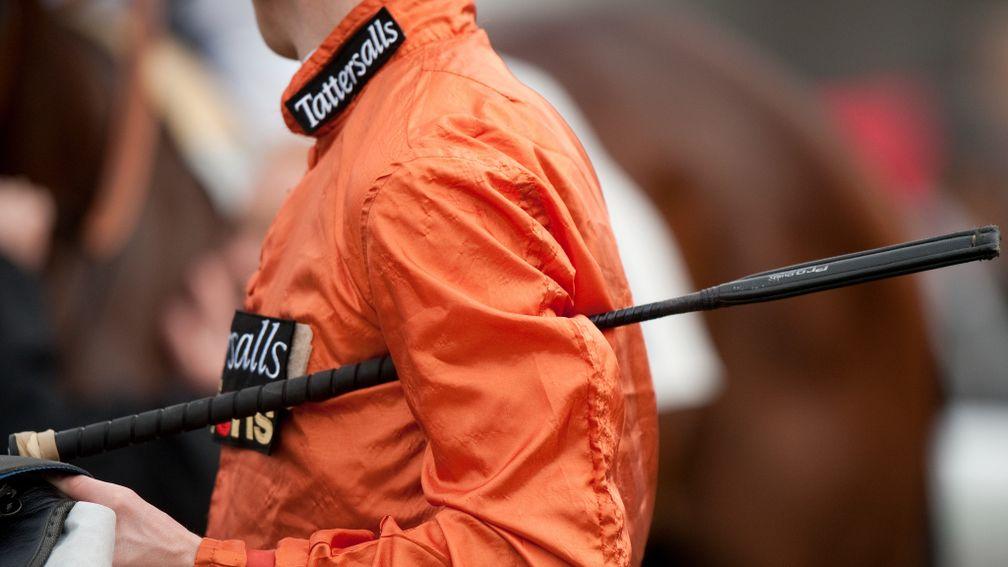The current rules and why there's a perceived need for change

It all seemed to be going so well. In 2016, five years after the current whip rules were introduced, the BHA reported the number of breaches had declined and seemed to think it deserved some credit for bringing about that situation.
"Just 0.61 per cent of rides now incur a penalty," a statement trumpeted. "This equates to a total decrease of 48 per cent in the number of offences."
Jamie Stier, who was then the BHA's director of regulation, described the data as "evidence of an ongoing cultural change in the use of the whip by riders based in Britain".

That word "ongoing" must have been wrongly used because, less than three years later in December 2018, the BHA's then chief executive Nick Rust predicted the introduction of "a new structure for penalties and deterrents for overuse of the whip".
Rust reckoned the rules were working, except "in the very top races, when there's so much at stake" and left a BBC reporter with the impression that whip use might be completely banned within three years.
Since 2011, the rules have been based around counting, seven uses of the whip being allowed in a Flat race or eight in a jumps race. Stewards have discretion to discount some whip uses, so nine in a race would not automatically be a breach, and they have evaded oversight of how they apply the rules by not stating in their published verdicts how many times they believe the whip was used.
Whip use is required to be "appropriate, proportionate and professional" and can have the aim of maintaining a horse's focus as well as encouraging them forward.
It must not be used with the arm above shoulder height, without regard to stride, with excessive force, without allowing time to respond or on a horse who is out of contention or clearly winning.
If a jockey repeatedly breaches the whip rules within a six-month period, they are referred to a disciplinary panel who can impose a 'totting-up' ban. The aim is to provide an incentive for those found in breach to make any adjustments necessary to stay within the rules.
Whip offences fell to a new low of 410 in 2019 but the newly created Horse Welfare Board said early the next year that the tally was "unnecessarily high" and insisted the rules were not providing an adequate deterrent.

It called for tougher penalties as a "clear, minimum recommendation" and also urged the sport to consider whether a horse should be disqualified when their rider breaks the rules.
Brant Dunshea, the BHA's chief regulatory officer, responded by announcing a consultation that led to today's review.
"None of us wants the way we use the whip to be an issue of public or political concern," he said in 2020, "so we'd like an outcome that is safe, fair, understood and accepted. We don't want to have to return to this issue."
Read these next:
Full story: backhand whip use only and disqualification to be introduced in new whip rules
Reaction: 'It does not go far enough' – charity criticises whip review despite involvement
Timeline: from 1889 to the present day: how the whip rules have evolved down the years
Key jurisdictions: what are the whip rules in other countries?

Sign up to receive On The Nose, our essential daily newsletter, from the Racing Post. Your unmissable morning feed, direct to your email inbox every morning.
Published on inBritain
Last updated
- 'You need to keep your powder dry' - Aidan Coleman on Cheltenham's two tracks as action switches to the New course
- Confirmed runners and riders for the December Gold Cup at Cheltenham on Saturday
- Racing to go ahead at Bangor on Friday after track passes inspection
- Four eyecatching runners on Cheltenham's Friday card - including a festival fancy and a cross-country contender
- Sir Alex Ferguson and friends looking to win it with kids again as Il Ridoto bids for big double at Cheltenham
- 'You need to keep your powder dry' - Aidan Coleman on Cheltenham's two tracks as action switches to the New course
- Confirmed runners and riders for the December Gold Cup at Cheltenham on Saturday
- Racing to go ahead at Bangor on Friday after track passes inspection
- Four eyecatching runners on Cheltenham's Friday card - including a festival fancy and a cross-country contender
- Sir Alex Ferguson and friends looking to win it with kids again as Il Ridoto bids for big double at Cheltenham